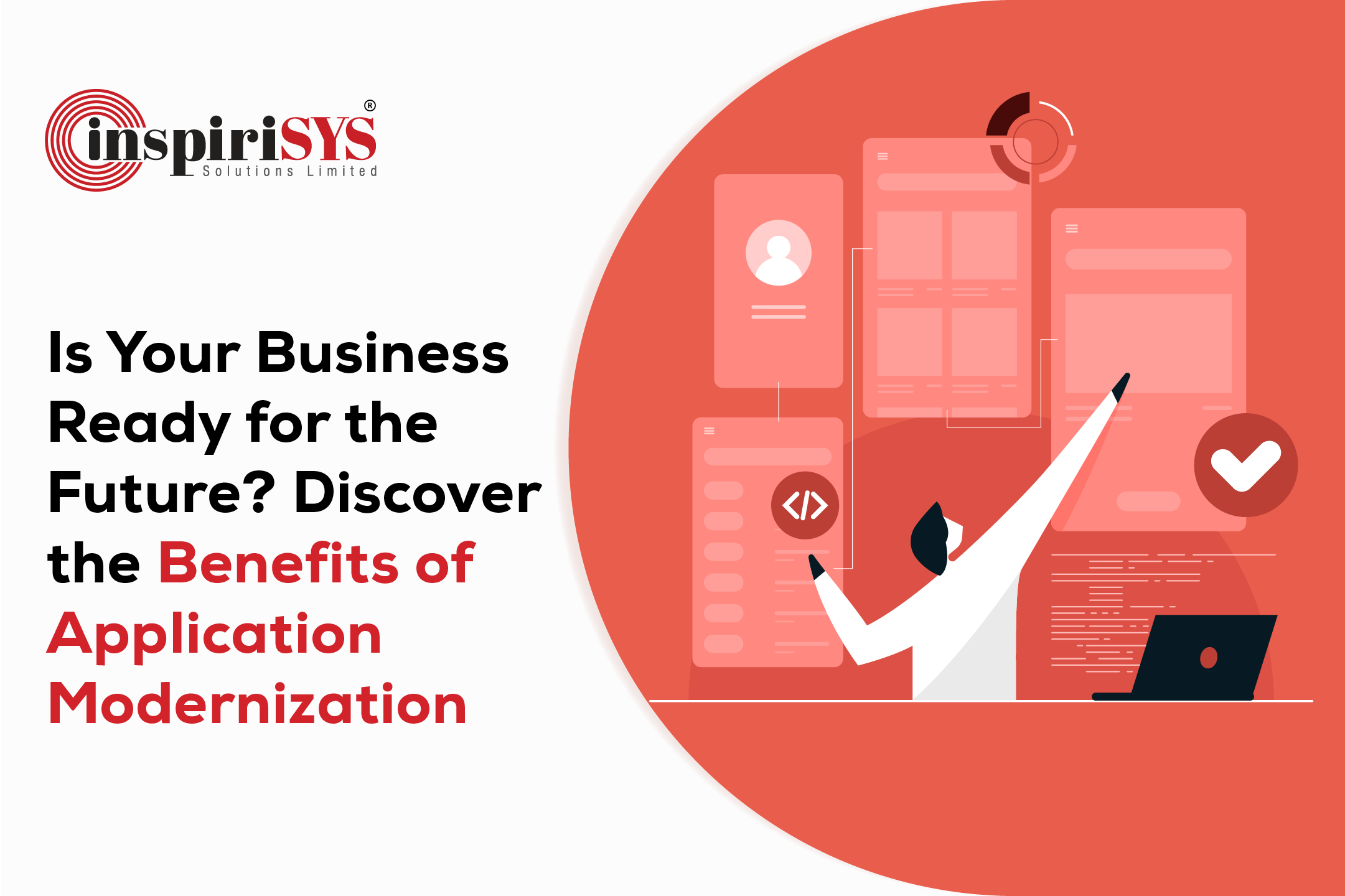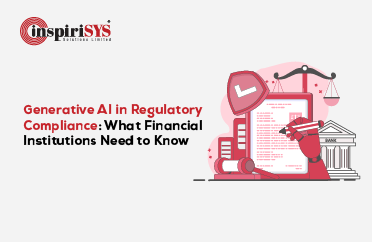Are you pondering whether it is the right time to modernize your legacy application? Here are the benefits you will extract if you implement application modernization.
Enterprises that have built valuable applications in the past are recognizing the importance of modernization as a vital investment in their digital transformation journey. This is primarily because modernized legacy applications enhance productivity and performance, ultimately providing businesses with a significant competitive edge in the market. Let’s explore the reasons for upgrading your legacy applications and the benefits they will reap in your business.
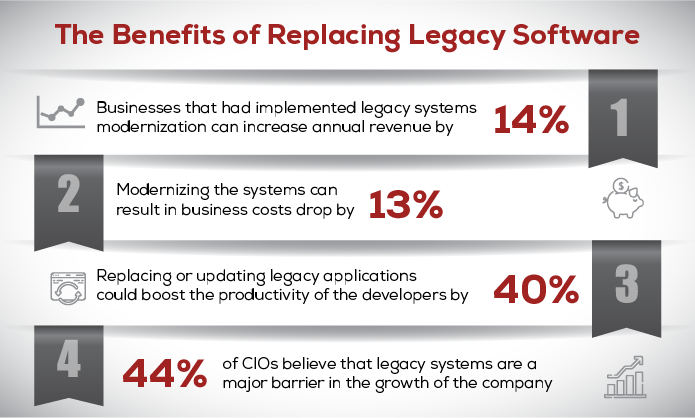
Source: Data Science Central, avanade: IT Modernization
7 R's of Application Modernization: Unveiling the Path to Modernize Legacy Applications
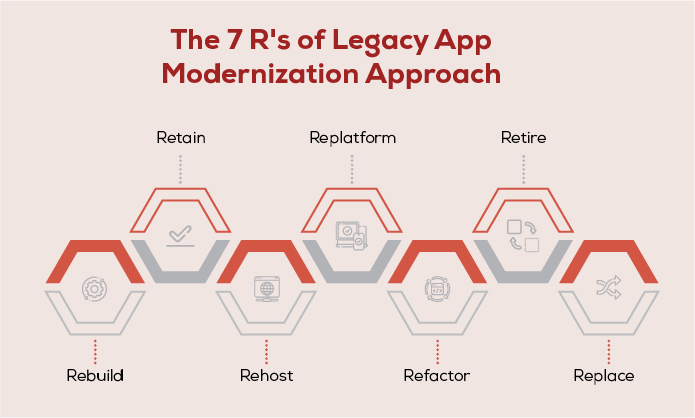
Choosing the perfect approach for your legacy application modernization journey can be tricky. While there are 7 options (The 7 R’s of modernization) to choose from, it is important to find out which approach will benefit your app function faster and better.
Here are the 7 R’s that act as the basic techniques while carrying out application modernization.
Realign: The first step is to assess and realign the legacy application with the current business objectives and technology landscape. This involves understanding the business needs, identifying pain points, and defining goals for the modernization effort.
Rebuild: Rebuilding entails redeveloping the application from scratch while preserving its functionality and business logic. This approach provides an opportunity to leverage modern development practices, architectures, and technologies. However, this method also demands more time and resources compared to other alternative approaches.
Replatform: This step involves migrating the legacy application to a new platform while preserving its core functionality. In addition, it may also involve moving the application to a new infrastructure, such as cloud computing. This allows enterprises to leverage scalability, flexibility, and cost-efficiency.
Rehost: Rehosting, also known as "lift and shift," involves moving the application to a different environment without making significant changes to its architecture or code. This approach allows for a quicker migration, however, it may not leverage the full potential of modern technologies.
Revise: The revision step involves making selective modifications to the legacy application to improve its performance, scalability, or maintainability. This could include refactoring code, optimizing database queries, or updating outdated libraries or frameworks.
Replace: In some cases, it may be more beneficial to replace the legacy application entirely with either a commercial off-the-shelf (COTS) solution or a new custom-built application. This approach is suitable when the existing application is outdated, poses maintenance challenges, or lacks crucial features for efficient operations.
Retire: The final step is to retire or decommission the legacy application after migrating or replacing its functionality. This process involves ensuring a smooth transition to the new system and appropriately archiving or transferring any pertinent data or functionalities to ensure continuity and data integrity.
Why Modernize Legacy Systems?
Modernizing your outdated application brings numerous benefits and features to your application for obvious reasons. The cost of maintaining legacy applications for an enterprise is excessively high, making them susceptible to bugs and security threats. To stay competitive in the market and keep up the pace with the rapidly increasing technology, companies need to take proactive measures to modernize these systems. This not only involves modernizing the existing codebase, but also adopting emerging technologies like cloud computing, containerization, micro-services, or implementing DevOps-style delivery pipelines.
Here are a few reasons that highlight the importance of legacy application modernization.

1. Stronger Security Features
By updating legacy applications with modern technologies and frameworks, organizations can effectively address vulnerabilities and strengthen their defences against potential threats. Modernized applications often incorporate robust security features, such as encryption, access controls, and secure coding practices. These measures significantly reduce the risk of data breaches and unauthorized access. Furthermore, the adoption of cloud-native architectures and containerization allows better isolation and containment of potential security breaches, thereby reducing the overall attack surface.
2. Stay Up with Market Trends
Application modernization enables organizations to stay up-to-date with market trends and maintain a competitive edge. By upgrading legacy applications and embracing modern technologies, businesses can align their systems with the latest industry standards and customer expectations. This allows them to leverage technologies such as cloud computing, artificial intelligence, and data analytics. Modernized applications are often more flexible, scalable, and responsive, enabling organizations to adapt quickly to changing market demands.
3. Avoids Technical Debt
Modernization proactively addresses technical debt by replacing outdated components, streamlining codebases, and adopting modern development methodologies. Upgrading your application reduces the complexity and maintenance burden associated with legacy systems, thereby minimizing the risk of future issues and the costly need for rework. Ultimately, application modernization empowers businesses to mitigate technical debt, enhance system performance, and establish a more sustainable and efficient technology landscape.
4. Increased ROI
Upgraded legacy apps directly impact your business with improved performance, enhanced user experience, and increased operational efficiency. These improvements ultimately lead to revenue growth and cost savings which are necessary for a business to run successfully.
Benefits of Modernizing Legacy Applications
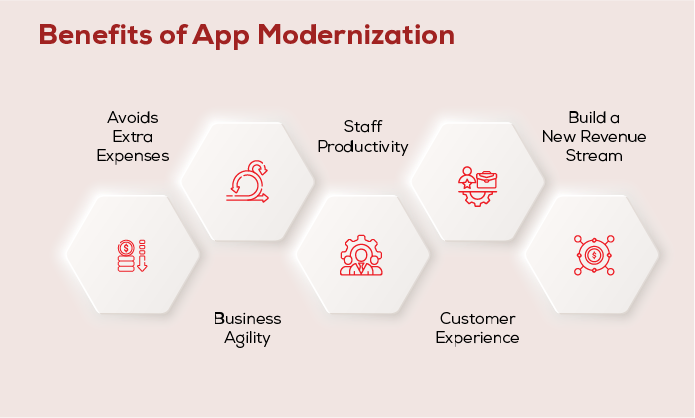
(i) Avoids Extra Expenses
Application modernization can result in substantial cost savings for organizations. With upgraded versions of legacy apps, businesses can reduce maintenance and support expenses associated with outdated technologies. New technologies implemented in the modernized apps require fewer resources to operate, resulting in lower infrastructure costs.
Moreover, streamlined and efficient codebases lead to reduced development and testing efforts, saving both time and money. Cloud computing is one of the major technologies adopted during modernization and this eliminates the need for costly on-premises infrastructure.
(ii) Business Agility
The enhanced agility attained through modernization empowers businesses to promptly and efficiently respond to evolving market dynamics. By modernizing applications, organizations can embrace flexible architectures and technologies that facilitate accelerated development and deployment cycles.
This increased agility enables businesses to swiftly introduce new products and services to the market, seize emerging opportunities, and stay ahead of competitors. Additionally, application modernization promotes improved collaboration across departments, fostering seamless teamwork among cross-functional teams.
(iii) Staff Productivity
By modernizing legacy applications, organizations have the potential to witness a significant boost in staff productivity. Implementation of modern technologies allows employees to benefit from streamlined workflows, improved user interfaces, and enhanced functionality.
Modernized applications often provide intuitive interfaces, minimising the learning curve and allowing employees to work with increased efficiency. Automation and integration capabilities offered by modernized systems reduce manual tasks and data entry, freeing up valuable time for higher-value activities.
(iv) Customer Experience
In today’s modern world, customers prioritise quality customer experiences above all when using a software product or an application. Updating legacy systems that have outdated features to include customer-friendly features can significantly enhance the overall user experience within an app. Through modernization, organizations can integrate advanced characteristics such as self-service options, real-time notifications, and personalized recommendations, creating a more engaging and satisfying customer journey. Businesses can deliver a seamless, intuitive, and personalized user experience to their customers.
Ultimately, application modernization enables organizations to meet evolving customer expectations, build stronger relationships, and drive customer loyalty and satisfaction.
(v) Build a New Revenue Stream
Application modernization opens up opportunities for organizations to create new revenue streams. By upgrading and modernizing applications, businesses can introduce profitable features and services that attract new customers and generate additional revenue. Modernized applications enable organizations to leverage emerging technologies such as e-commerce, mobile payments, and subscription models, expanding their reach and monetization potential.
On the whole, the modernization of legacy apps enables organizations to capitalize on new revenue systems, diversify their income streams, and drive sustainable business growth.
Conclusion
Just like any other products we use, applications and software require ongoing maintenance and updates to ensure their sustainability. While the modernization of legacy apps offers significant benefits, it is important to choose the right approach for upgrading respective applications. Strategic planning and assessing your best business needs is critical by all means. This should be the primary task before you decide to bring a new version of your legacy app. Keep your priorities clear so that you don’t have to bring updates to the whole application as this will cause unnecessary expenses and waste of time.
Frequently Asked Questions
1. What is Application Modernization?
Application modernization is an essential process of upgrading an outdated software or application to enhance its overall functionality. Enterprises that modernize their applications will see improved performance and smooth functioning along with the ever-changing technologies and computing approaches. During the modernization process, frameworks, infrastructure platforms, and new programming languages are incorporated to optimize operational efficiency, minimize technical debt, and enhance agility. By embracing modernization, organizations can harness the full potential of their applications and stay ahead in a rapidly changing technological landscape.
2. Why Strategy is Important in Application Modernization?
A well-defined strategy is vital in application modernization as it establishes a clear roadmap, aligns modernization efforts with business objectives, prioritizes applications, guides technology choices, and optimizes resource allocation. It ensures a structured and efficient approach, maximizing the benefits of modernization while minimizing risks and costs.


